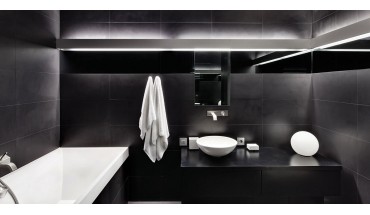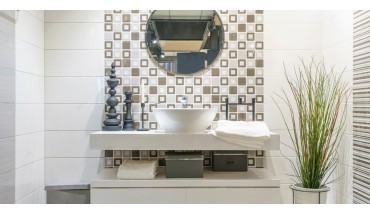
Oh, the bathroom sink. One of the major players in anyone’s bathroom. Along with the toilet and bathtub, it’s one of the three main fixtures. Part of the trinity, you might say.
But despite how important it is, choosing one can often be overwhelming. Plenty of options lay out before you in a smorgasbord of finishes, materials, and installation types. Each one of these topics warrants its own blog post. Here, I want to start by talking about one of them: the different types of sinks you can choose. Before you head out to purchase your bathroom sink, arm yourself with this bit of information:
Drop-In Sinks
Probably the most common bathroom sink type out there. As the name suggests, these sinks “drop-in” below the counter top, with a lip resting on top. The lip can be slim or thick depending on the sink. These types of sinks are good for any kind of wood or laminate countertop because the lip prevents water from seeping into cracks and causing damage. They also tend to be the least expensive option, and are easy to install. The only real downside to drop-in sinks is that you cannot simply wipe water and spills directly from the counter into the sink.
Undermount Sinks
Undermount sinks are sinks that sit underneath the counter. No lip overhangs on the counter. Instead, the rim is recessed beneath, creating a seamless and clean look. This comes with the added benefit of being able to wipe debris and spilled water directly into the basin without anything getting in the way. Unfortunately, they aren’t suitable with as many types of counters. Your best bet would be a solid-surface, like stone. (Laminate can’t be sealed as well against moisture.) These sinks also tend to cost a little more than drop-in sinks.
Wall-Mounted Sinks
Installed directly onto the wall, these sinks do not need a counter to sit in or on top of, giving a minimalist and streamlined appearance. Since they don’t have any cabinets below them, they save space and leave more visible floor space, which makes the room feel bigger. This also makes maintenance easier as nothing blocks access as you try to wipe down the sink and mop the floor.
However, the lack of storage space, and the lack of “landing” space on countertops for many wall-mounted models can create challenges. Since they also rely solely on support from the wall, placement is restricted somewhat to allow for attachment to wall studs. Wall-mounted sinks work best in small bathrooms or powder rooms where storage isn’t so important.
Pedestal Sinks
Pedestal sinks are great for people who want a wall-mounted sink but don’t like the plumbing to be visible beneath it. For these sinks, the pedestal rests underneath the basin, concealing any pipework and adding just that extra bit of structural support. They also give the room a classical vibe that is pleasant on the eyes. But they have the same storage drawbacks as a wall-mounted bathroom sink, and they can be tricky to clean because of the gap between the wall and the pedestal.
Vessel Sinks
Vessel sinks sit completely atop the counter. They are not recessed at all. Demanding attention, this type of sink is perfect for making bold decorative statements in bathrooms. They are basically large bowls, and they are generally deep and hold a great deal of water. On the other hand, their height means some careful planning needs to be done to ensure they are set at a comfortable height. This can sometimes mean less storage underneath the sink. And it can be a bit of tight fit to clean around the base and back.















